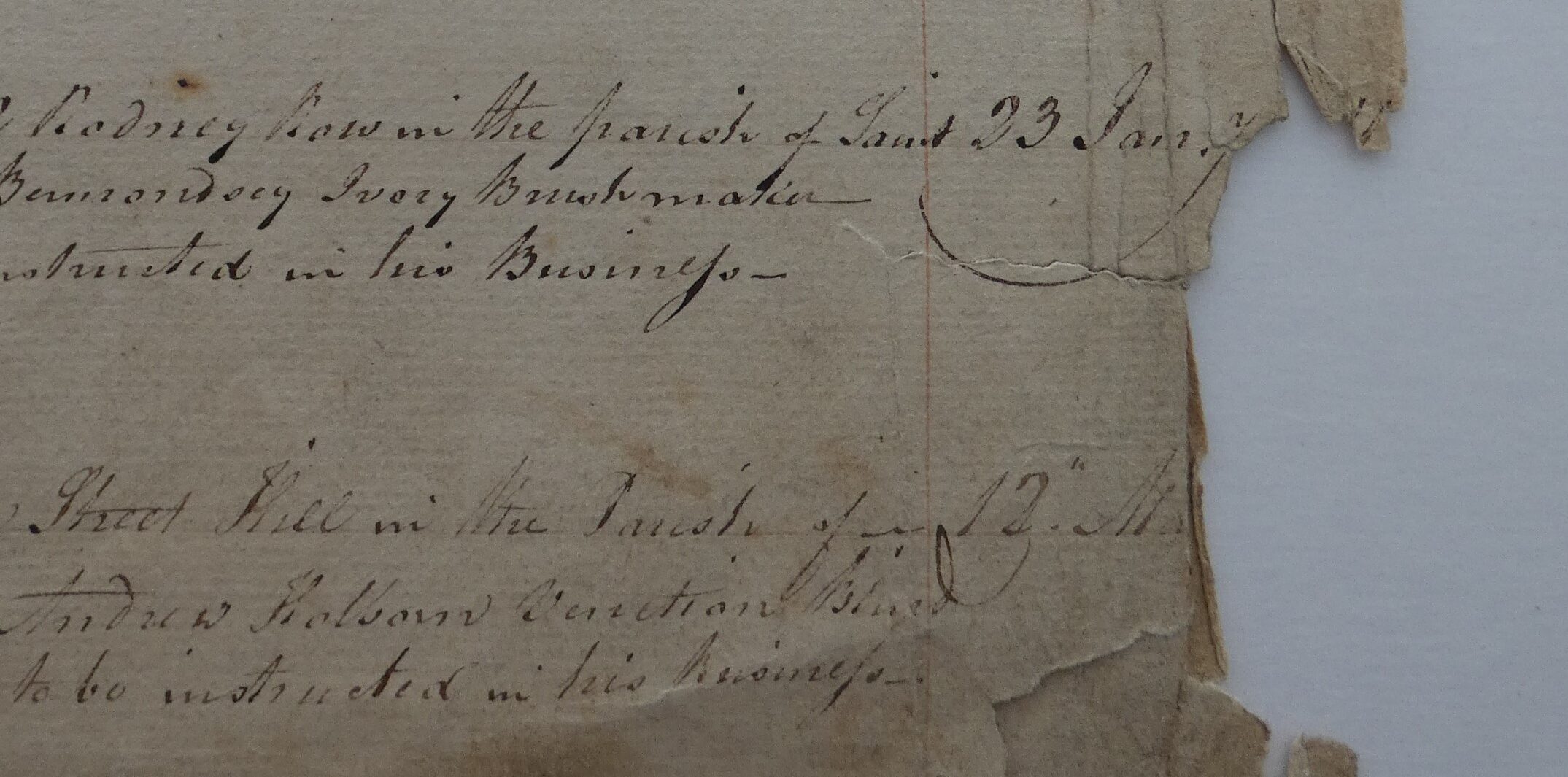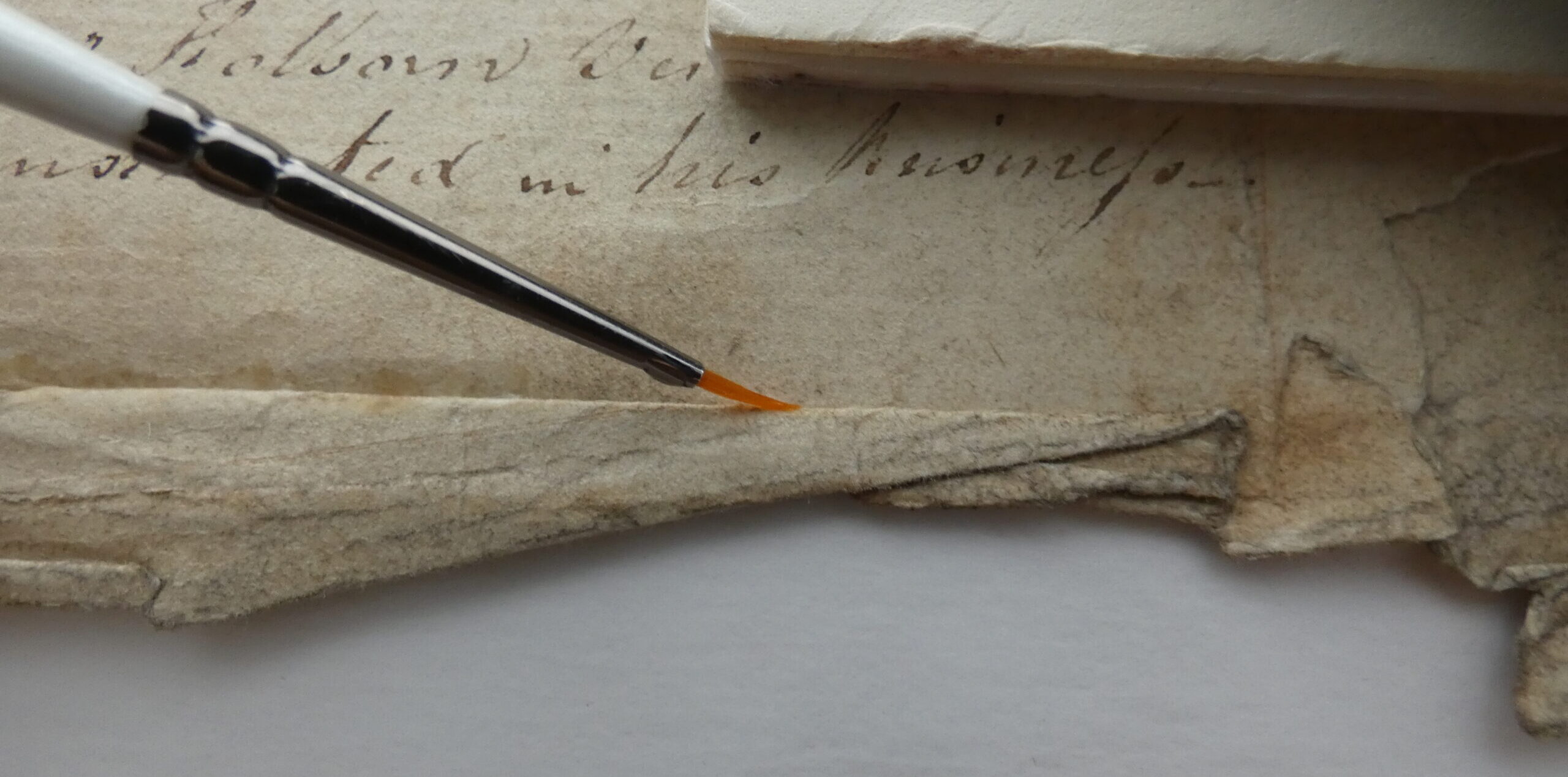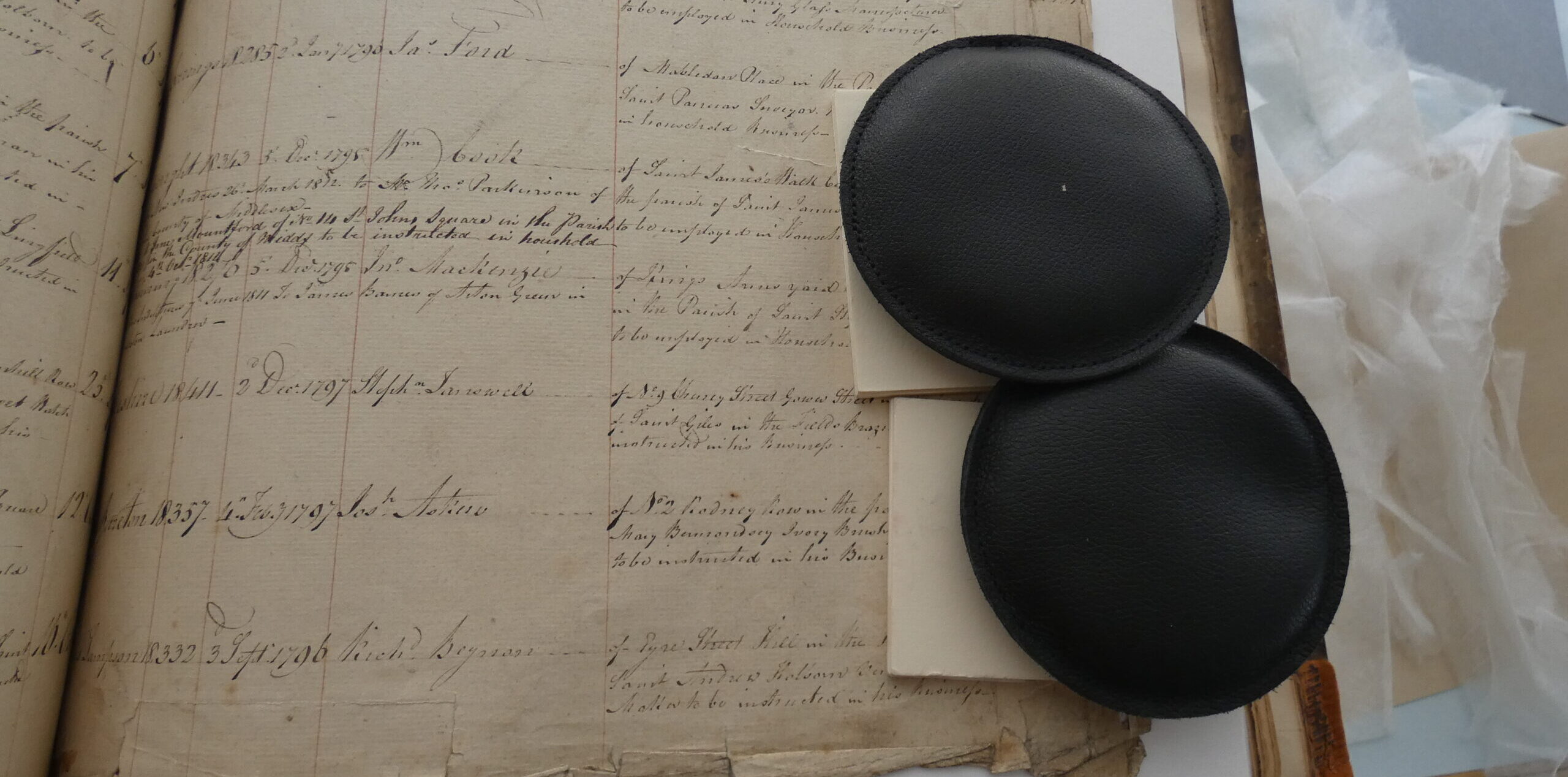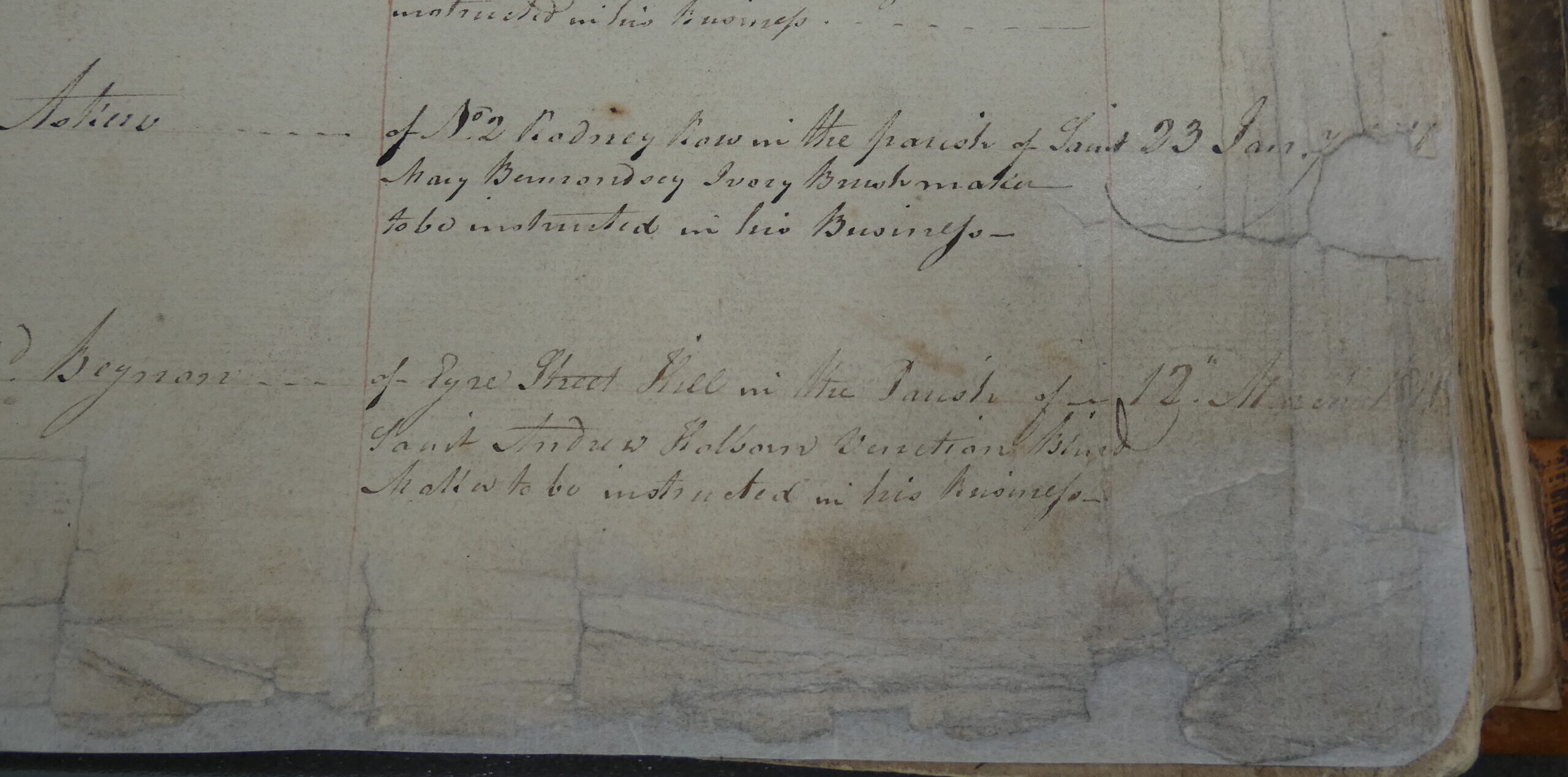Our fantastic conservators are busy in our archives, restoring our precious artefacts so that they can be digitised for future generations. This blog series explores the finer detail of their work, in their own words.
My role as a conservator at the London Metropolitan Archives (LMA) is to repair any damage that obscures text or manuscript (handwriting) as well as to inspect items and determine whether they can be safely handled by the digitisation staff.
As a digitisation project with a huge volume of objects to treat on a very short timetable, we cannot repair all the damage we come across, so we are constantly having to make decisions about whether a tear or a fold is damaging, or will likely endanger, the visibility of the text.
The most common damage I have come across so far is finding that pages of a book are torn and folded up, obscuring the information we want to digitise. To address this, we use a tiny brush and apply water to the folds to rehydrate the paper fibres. The water swells the folded paper fibres and allow them to flex, and thus the paper can unfold safely.
Once the paper is unfolded, the damp areas are dried flat, under weights so that they will stay flat. Lastly, to repair the tears and keep the page dimensionally flat, the areas are held in place with a lightweight Japanese tissue. This adds strength and means the page is safe to be handled so the book can be used again.





